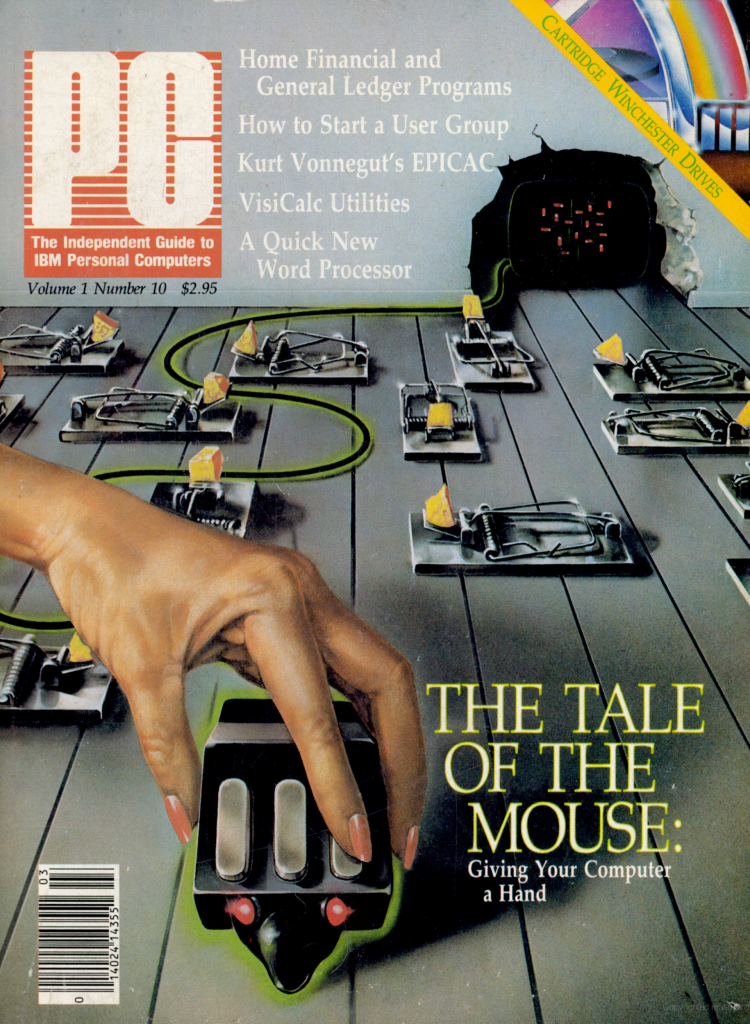The IBM PC was a year old when this issue of Pc Magazine was on the stands. Going by page count, which was over 225 pages for this issue, there was already a ton of advertising behind PC products. The August 1982 issue of PC Magazine includes:
PC Interview
- An Interview with VisiCalc Entrepreneur Daniel Fylstra – A look at the history of VisiCalc and VisiCorp.
Business
- The More PCs the Merrier – IBM offers discounts on very large purchases (in the hundres or thousands of units).
Events
- NCC Roundup – A look at what was to be seen at the National Computer Conference in Houston, Texas.
- Of Camesl and Tents – A look back at the past five years of the NCC and personal computing.
Finance
- How Much Are You Really Worth? – Calculating your net worth with a PC and spreadsheet.
Software
- Calc Wars – Testing SuperCalc and comparing it to VisiCalc.
- The Challenger: Multiplan – A review of Multiplan, Microsoft’s new spreadsheet program.
Marketplace
- Mega Forces Unite – Sears introduces 45 new business centers with the IBM PC as the lead item.
Operating Systems
- The Bithood Question – 8- vs. 16- vs. 32-bit CPUs.
- IBM Updates DOS to 1.10 – DOS 1.10 added features such as the ability to handle dual-sided 320K disk drives, improved disk I/O speed, improved copy and dir commands, and more.
PC profile
- The Computer that’s Literally for the Birds – How one ornithologist uses a custom database program and VisiCalc to keep track of bird data.
Communications
- PC-Talk – A free communications program for the PC.
Books
- A Tool for the Layperson – A review of the book IBM Personal Computer: An Introduction to Programming and Applications.
Product Reports
- PC Reviews the Smith-Corona TP-1 Printer – A letter quality daisy wheel printer for about $700.
PC Lab
- PC Takes a Look at IBM’s Pascal Compiler – A review of this early Pascal compiler for the PC.
Follow-Up
- EasyWriter Resurrected – A look at this improved version of the EasyWriter word processor.
- New Software Submission Guidelines from IBM – Highlights of IBM’s new software submission guidelines for those that want to try to have their software sold by IBM.
At Home
- The Computer Workstead – Working at home with your PC.
Book Exerpt
- VisiCalc and Your Stock Portfolio – An excerpt from VisiCalc Home and Office Companion.
Age of Altair
- The Grand and Glorious Crusade – One in a series of articles about the history of the Altair computer.
Columns
- David Bunnell – The software publishing jungle.
- Zero Base Thinking – How e-mail systems help to keep things from falling through the cracks.
- Jean Yates & Dr. Rebecca Thomas – An idea for a low-cost dedicated VisiCalc machine.
Departments
- Letters to PC – Letters from readers about adding a customer service card, copy protected software, IBM employee sales, adding a an MP1 B51 drive to the PC, speeding up disk drive access, and more.
- PCommuniques – Keeping your PC cool; reduced price 64K expansion board; Zork released for the PC; electronic greeting cards; King James Bible released on disk; successor to the PC may have 8087 math coprocessor; four new computers announced that are software compatible with the PC; and more.
- User-to-User – A look at the bugs fixed in the V1.05 update to BASICA, BASIC programming tips, PASCAL tips, printing with the NEC Spinwriter 3530, and more.
- Book Briefs – A look at new books including A User Guide to the UNIX System and Introduction to WordStar.
- New on the Market – A brief look at new PC related products including 64K-256K memory boards from Micro Match, the Intel 8087 Chip, the DataSouth DS180 dot matrix printer, a joystick from TG Products, the Move-It communications program, and more.
- PC Tutor – Using an autoexec.bat file, solving double character problems with The Source and the IBM Asynchronous Communications Support program, and more.

…and more!










